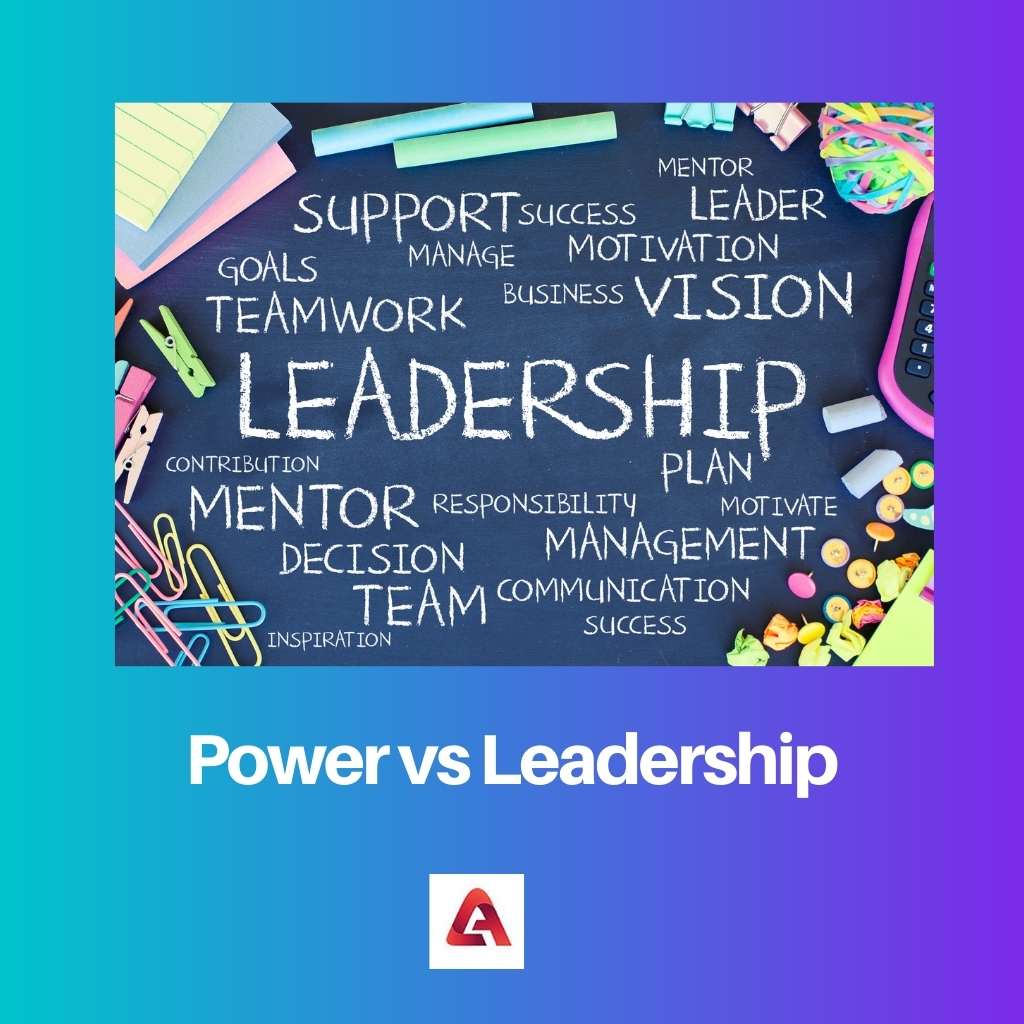An ordinary person can influence, grow, and help others without being the team’s coach. Similarly, it is feasible to wield power without being in such a position of authority in many settings.
People with power can control the action of others, but leaders have the power to influence. It is essential to determine their difference to understand their legitimacy.
Key Takeaways
- Power refers to the ability to influence others and control resources, whereas leadership involves guiding and inspiring a group towards a common goal.
- Leaders use various power sources, such as personal charisma and expertise, while power can exist without leadership.
- Effective leadership requires communication, empathy, and decision-making, whereas power can be exerted without these qualities.
Power vs Leadership
The difference between power and leadership is that power is the ability to control others’ actions, meanwhile leadership is the ability to influence others’ actions. Power comes from a place of control, while leadership comes from an individual’s nature.

Power is widely described as an individual’s capacity to exert a specific type of control over another human.
Power comes from an authority position and is classified into legitimate, coercive, and expert power. Individuals frequently utilize power for their selfish enrichment; as the expression goes, ‘Power Corrupts.’
Leadership entails developing a vision, persuading others to strive toward that aspiration, and forming a team. To influence people, a leader must be believable.
Power is required for effective leadership. To properly inspire followers, all leaders must wield some influence.
Comparison Table
| Parameters of Comparison | Power | Leadership |
|---|---|---|
| Definition | Not necessity to be in power | Capacity to persuade others to do what you want them to do without using force. |
| Credibility | To be successful, leadership necessitates ability. | It is needed to be in a leadership |
| Source | Comes from the stance of authority | It is a human characteristic. |
| Types | Coercive, legitimate, referent | Autocratic, democratic, transformational, monarchical |
| Co-dependence | Power does not rely on leadership | To be successful, leadership necessitates power. |
What is Power?
Power is widely described as an individual’s capacity to exert influence over another human. Power and influence have a separate connection.
It is a causal efficacy that can be a visible change in economics or an emotional strain that drives humans to pick a specific choice over another.
As a child, your family strongly impacted your activities, and you would frequently strive to replicate their favoured behaviour to please them.
The same is true at school, where teachers may readily persuade you to do one thing over another. In both circumstances, your parents and instructors have acquired authority that allows them to influence you.
Furthermore, there are alternative sources of power that may be used. The capacity to award followers or provide some benefit is referred to as reward power. At the same time, coercive power stems from the ability to impose penalties or sanctions.
A few different kinds of power are legitimate power which is obtained by a role of official status in an organization or through a vote.
Referent power is entirely dependent on those who follow. Lastly, integrated management is gained from one’s capacity to bring others together.
Power is vital in the political arena. There have been cases where novices have inherited enormous authority as they were born as the child or grandchild member of a constitutional monarch.
Army leaders have also been able to seize control of administrations by force or by attempting a coup.

What is Leadership?
The phrase ‘leadership’ conjures up various images, such as a political figure, an adventurer directing a group of people through a jungle, or an executive inside a firm.
A leader is a successful individual who sets a vision, encourages others to work toward that vision, educates and forms the team that will spearhead the fulfilment of the aspiration, and oversees the vision’s final delivery.
Leadership, in contrast, frequently is formally bestowed by an organization. Leadership is also a set of behaviours that lead to effective organizations.
Theories and practices can help leaders ensure success in the development of employees. Best practices draw on research and studies completed in psychology and others.
There are several leadership styles, just as various sorts of power. There are twelve varieties in all, while 5 of them are the most common we see daily.
Some types of leadership are autocratic leadership, characterized by the leader’s complete accountability and ownership over their subordinates.
Democratic leadership, which entails including employees in decision-making. And finally, transformational leaders are the style of leadership that is focused on starting some reform.
With each degree of advancement or position, every leader gains a proportionate amount of inherent authority. The capacity to generate devoted followers is a characteristic shared by all excellent leaders.

Main Differences Between Power and Leadership
- Power is the ability to exercise control over others, and leadership is the ability to inspire others without coercion.
- People in power need not always be credible, but leaders need to be credible.
- A stance of authority confers power, whereas leadership is a human trait.
- Power can be coercive, legitimate, or referent, while leadership can be autocratic, democratic, transformative, or dynastic.
- Power is not dependent on leadership, but effective leadership need power.

- https://psycnet.apa.org/record/1990-15948-001
- https://www.emerald.com/insight/content/doi/10.1108/14777260410570009/full/html

Leadership and power should be balanced to avoid negative consequences on those who are being led.
The power to influence human behaviour is the essence of leadership, not control.
Leadership and power are closely related but they are not the same. It’s crucial to have both to be a good leader.
Leadership is what matters. Even those with power can’t lead if they don’t have the leadership skills.
Influence is the foundation of leadership, while power is about control.
The key difference between power and leadership is a matter of control versus influence. Leaders control the action of others by inspiring, rather than exerting control.